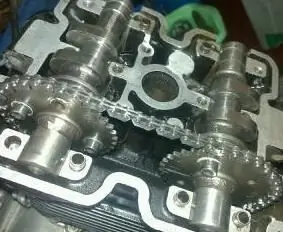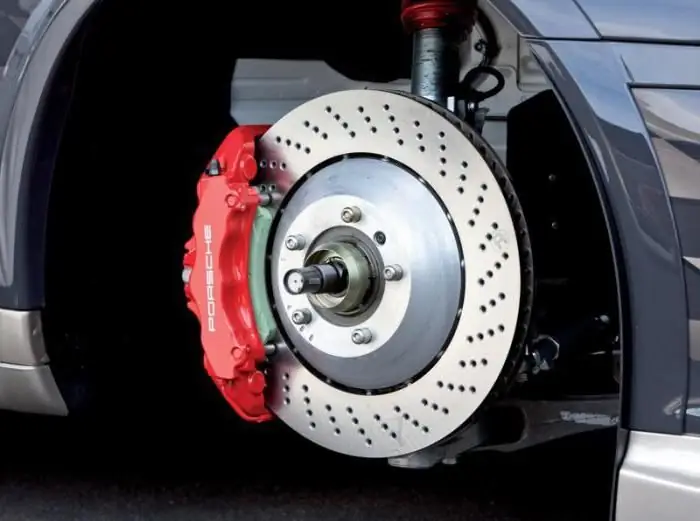2025 Author: Erin Ralphs | [email protected]. Last modified: 2025-01-22 21:14:11
The introduction of new environmental safety standards for cars is forcing manufacturers to develop more and more advanced technologies that allow their products to comply with regulations. Such aspirations have led to the emergence of entire families of engines that are characterized by low emissions of processed products. Work is also underway in other areas. So, in 2004, a diesel particulate filter appeared, which minimizes the amount of harmful emissions. Although by the time of its appearance it was not so widely in demand, the developers continued to develop the idea, and today, according to the Euro-5 standard, the presence of this device in the design of a car is mandatory.
What is a particulate filter for?

Devices of this type are means of post-treatment of exhaust gases. It should be noted right away that particulate filters are used exclusively in diesel engines. In gasoline units, their analogue is a catalyst. The main task of the installation is to remove toxic substances from the exhaust. Such processing of gases makes cars more environmentally friendly. Filters may be different in design, but they all perform the task of reducing soot levels in exhaust gases by 80%.
KUnfortunately, performing this function entails a lot of other problems, most of which are related to the maintenance of the filter itself. As gases are processed, the device becomes contaminated and needs to be cleaned. In extreme cases, particulate filters are removed and new post-treatment components are installed in their place.
Filter device

The unit is located behind the catalytic converter. Some variations of the filter also allow its structural combination with an oxidative neutralizer. In such cases, it is located behind the exhaust manifold, where the maximum temperature of the gases is noted. The main component is a matrix placed in a metal case. In standard models, it is made of silicon carbide, which is distinguished by a cellular structure with small cross-section channels. Actually, the porous structure of the side walls in these channels ensures the cleaning. It is important to note that the diesel particulate filter is only part of a whole complex of devices and systems involved in the workflow. This group also includes temperature sensors, a power unit, an on-board computer, a turbocharger, etc. Another thing is that the filter performs the final cleaning function and therefore can be considered as a key link, since it implements the physical retention of harmful elements.
Working principle

The whole process can be divided into two stages - direct filtration and soot regeneration. At the first stage, soot particlesare captured, after which they settle on the walls of the filter. In this regard, the most problematic are small particles up to 1 micron in size, since their small weight interferes with retention. Although the share of such elements represents only 5% of the total, they are the most dangerous for humans. However, modern particulate filters can effectively cope with the processing of such particles. The second stage is the regeneration of the settled elements. The fact is that their accumulation in large volumes not only harms the filter itself, but also reduces engine power, since an obstacle is formed for the passage of subsequent gases. In this regard, measures for cleaning soot devices are an indispensable part of car maintenance.
Passive filter cleaning

This type of cleaning is realized due to the influence of high temperatures of exhaust gases, which can reach 600 °C. Another type of passive regeneration method is the introduction of various additives into the fuel to ensure efficient soot combustion. In this case, the effect of temperature also occurs, but at the level of 400-500 °C. The particulate filter sensor, which also controls some engine operation parameters, allows you to monitor thermal exposure modes. However, in some vehicle operating conditions, passive filtering is useless or even impossible.
Active filter cleaning
This is a forced approach to filter cleaning, which is based on a special temperature increase inexhaust gas environment. The soot accumulated in the process of maintaining such conditions gradually burns out. The main thing in active cleaning is the ways in which high temperatures are achieved. Among the most common methods are late fuel injection, diesel injection on the exhaust stroke and microwave heating. In some cases, cleaning of the particulate filter is also carried out by an electric heater. The instrument can be installed next to a cleaning device, but before doing so, careful consideration should be given to the layout of its components. Active recovery is also controlled with the participation of sensors, in particular, devices for measuring pressure and temperature are used.

How to remove the particulate filter?
Despite the use of modern cleaning systems, filters of this type sooner or later begin to interfere with the operation of the engine. This is expressed by accumulations of soot, which are not removed by the prescribed methods. The way out of such situations may be to dismantle the device. Moreover, this event is carried out in two stages. First of all, a mechanical operation is performed, during which the particulate filter is dismantled directly. The price of this procedure varies from 7 to 12 thousand rubles. By the way, the installation of a new filter is estimated at 30-40 thousand rubles, so only a few decide to completely update the cleaning system. The second step is to programmatically remove the device by flashing the engine control unit.
Conclusion

Developersof environmental standards in relation to cars, of course, they care about the future of mankind and strive to orient manufacturers towards the directions that are most humane in terms of impact on nature. The end product of the development of one of these areas was particulate filters, which reduce the harmful effects on the environment. At the same time, motorists themselves received a lot of problems along with the new installation. Suffice it to note the need to regularly monitor the efficiency of filter regeneration. In case of insufficient self-cleaning of the device, the car owner has no choice but to remove this block or replace it with a new filter. But in both cases, costs will be inevitable.
Recommended:
Engine gas distribution mechanism: device, principle of operation, purpose, maintenance and repair

Timing belt is one of the most critical and complex components in a car. The gas distribution mechanism controls the intake and exhaust valves of an internal combustion engine. On the intake stroke, the timing belt opens the intake valve, allowing air and gasoline to enter the combustion chamber. On the exhaust stroke, the exhaust valve opens and exhaust gases are removed. Let's take a closer look at the device, the principle of operation, typical breakdowns and much more
Crankshaft - what is it? Device, purpose, principle of operation

The crankshaft is one of the main elements of the engine. It is part of the crank mechanism. It has a complex device. What is this mechanism? let's consider
ABS system. Anti-blocking system: purpose, device, principle of operation. Bleeding brakes with ABS

Not always an inexperienced driver manages to cope with the car and quickly reduce the speed. You can prevent skidding and blocking of the wheels by intermittently applying the brake. There is also an ABS system, which is designed to prevent dangerous situations while driving. It improves the quality of grip with the roadway and maintains the controllability of the car, regardless of the type of surface
The principle of operation of the variator. Variator: device and principle of operation

The beginning of the creation of variable programs was laid in the last century. Even then, a Dutch engineer mounted it on a vehicle. After such mechanisms were used on industrial machines
Purpose, features of the device and the principle of operation of the car starter

As you know, to start a car engine, you need to turn the crankshaft several times. On the first machines, this was done manually. But now all cars are equipped with starters that allow you to rotate the shaft without any effort. The driver only needs to insert the key into the lock and turn it to the third position. Then the motor will start without problems. What is this element, what is the purpose and principle of operation of the starter? We will talk about this in our today's article

